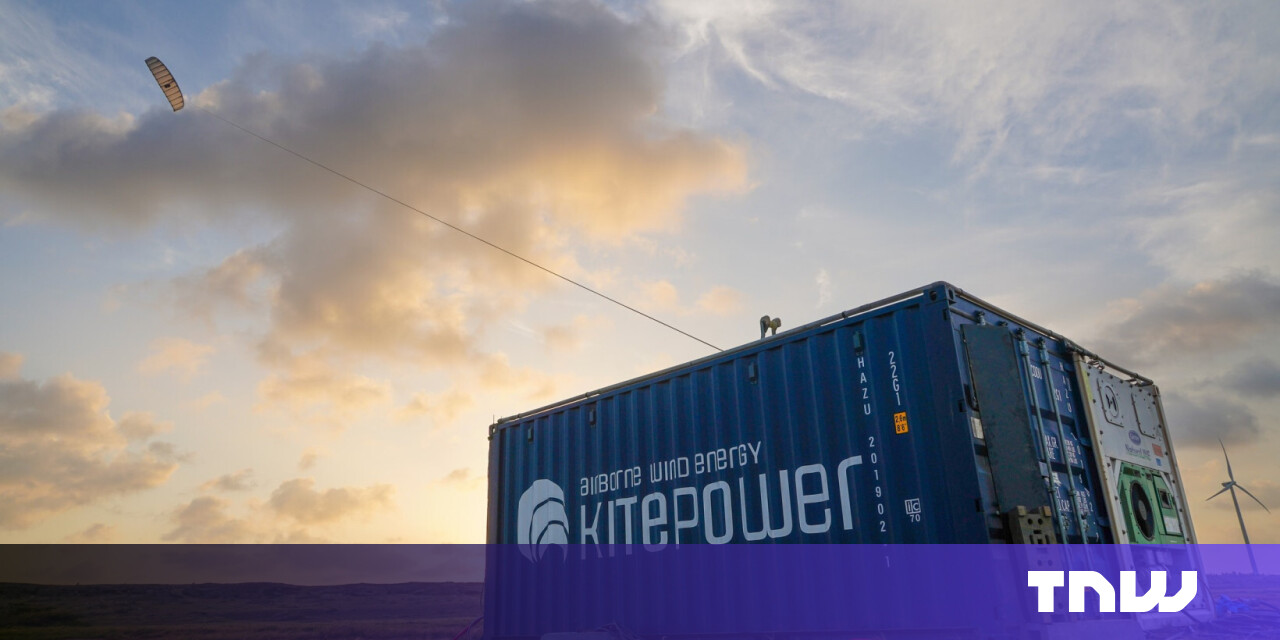
German energy giant RWE has put a new airborne wind test facility in Ireland to work for the first time, as it explores alternative forms of green electricity.
The experimental technology was developed by Dutch startup Kitepower. It connects a large kite to a generator with an ultra-strong rope, generating electricity as the kite goes up in altitude.
“Kitepower, as the name suggests, uses a large kite structure with a hybrid inflatable and fixed fibreglass skeleton to hold the kite open. It has a wingspan of 60 square metres and weighs only 80kg, including the Kite Control and sensor unit,” explains Johannes Peschel, the company’s CEO.
The Kite Control Unit (KCU) is attached to the tether and controls the direction the kite flies. The Dyneema tether (an ultra-strong rope which is stronger than a steel wire of the same dimension, but has less than one-tenth of its weight) is attached to a Ground Station, housed in a conventional seven-metre container.
Electricity is produced when the kite is flown in a cross-wind, figure-of-eight pattern, achieving a high pulling force. This hauls/draws the tether from the winch in the ground station. Once the maximum tether length is reached, the kite is reeled in and the process starts anew. Normally, these two operations take just 100 seconds — 80 seconds for reeling out and 20 seconds for reeling in. To find out more about the tech, check out the video below:
<iframe title="Join Kitepower's Journey to a Smarter Energy Future" width="500" height="281" srcdoc="*{padding:0;margin:0;overflow:hidden}html,body{background:#000;height:100%}img{position:absolute;top:0;left:0;width:100%;height:100%;object-fit:cover;transition:opacity .1s cubic-bezier(0.4,0,1,1)}a:hover img+img{opacity:1!important}

 ” frameborder=”0″ allow=”accelerometer; autoplay; clipboard-write; encrypted-media; gyroscope; picture-in-picture; web-share” allowfullscreen>[embedded content]
” frameborder=”0″ allow=”accelerometer; autoplay; clipboard-write; encrypted-media; gyroscope; picture-in-picture; web-share” allowfullscreen>[embedded content]
Kitepower, a spin-off from Delft University of Technology in the Netherlands, believes that airborne wind power has its greatest potential in remote locations, or small-scale applications, where large, expensive infrastructure is unfeasible.
The kites can be assembled out of the box in a day, according to the startup. One of the 100kW systems produces enough electricity to power approximately 150 households on average.
Kitepower has been operating in a number of temporary test locations over the past few years. The new test hub in Bangor Erris will be a permanent test base for the company, allowing it to accelerate the development of the system.
With the launch of the new test facility, RWE looks to explore the potential of airborne wind energy in complementing its existing portfolio of offshore and onshore wind, solar energy, and battery storage.
“With low capital expenditure and fewer materials, airborne wind has the potential to play a role in helping to drive down the cost of energy further,” said Cathal Hennessy, head of onshore renewables development at RWE.
“It will use winds at higher altitudes, which are stronger, steadier, and more constant. It can be used onshore as well as offshore and in combination with other technologies such as solar electricity generation,” he added.
The site in Bangor Erris was chosen after an extensive global search for a suitable location to develop airborne wind technology. Planning permission was granted earlier this year, allowing the Kitepower device to take flight.
The project was led by Mayo County Council, a local authority in Ireland, and supported through the Interreg North-West Europe Programme.
Services Marketplace – Listings, Bookings & Reviews